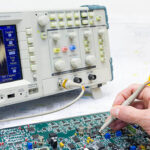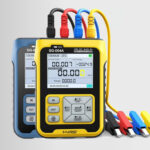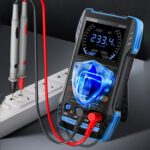In the realm of electronics testing and experimentation, signal generators and oscillators are indispensable tools, each serving unique functions in signal generation and manipulation. While these terms are sometimes used interchangeably, they represent distinct devices with specific roles and characteristics. Let’s delve into the key differences between signal generators and oscillators to better understand their respective purposes and applications.
Signal Generator
A signal generator is a versatile electronic instrument designed to produce various types of electrical waveforms, such as sine waves, square waves, triangle waves, and pulse waves. These waveforms serve as stimulus signals for testing, troubleshooting, and calibrating electronic circuits and devices. Signal generators come in different forms, including function generators, arbitrary waveform generators, and RF signal generators, each tailored to specific applications and frequency ranges.

Key Features of Signal Generators:
1. Waveform Variety: Signal generators offer a wide range of waveform options, allowing users to generate signals with different shapes, frequencies, amplitudes, and phases to simulate real-world conditions or test specific circuit behaviors.
2. Frequency Range: Depending on the type and model, signal generators can cover a broad frequency spectrum, from low-frequency signals in the audio range to high-frequency signals in the radiofrequency (RF) range, enabling testing across various electronic systems and components.
3. Modulation Capabilities: Many signal generators support modulation techniques such as amplitude modulation (AM), frequency modulation (FM), and pulse modulation (PM), enabling users to simulate modulation schemes commonly found in communication systems.
Oscillator
An oscillator is a fundamental electronic circuit that generates a periodic waveform without the need for an external input signal. The most common type of oscillator is the electronic oscillator, which uses feedback from its output to sustain oscillation at a specific frequency. Oscillators are widely used in electronic devices and systems for generating clock signals, local oscillators in communication systems, and reference signals for frequency synthesis and timing control.

Key Features of Oscillators:
1. Frequency Stability: Oscillators are designed to produce stable and accurate oscillations at a predetermined frequency, making them essential for applications requiring precise timing and frequency control.
2. Single Frequency Output: Unlike signal generators, which can produce a variety of waveforms, oscillators typically generate a single output waveform, such as a sine wave, square wave, or sawtooth wave, at a fixed frequency determined by the oscillator circuit.
3. Feedback Mechanism: Oscillators rely on a feedback mechanism to sustain oscillation, wherein a portion of the output signal is fed back to the input with the proper phase and magnitude to maintain continuous oscillation.
While both signal generators and oscillators are used for generating electrical waveforms, they serve distinct purposes and exhibit different characteristics. Signal generators offer flexibility in waveform generation and modulation, making them ideal for testing and signal simulation, while oscillators provide stable and accurate frequency sources for timing and synchronization applications. By understanding the differences between these two essential instruments, electronics enthusiasts and professionals can make informed decisions when selecting the appropriate tool for their specific needs.
Explore a wide range of signal generators, oscillators, and other electronic instruments at our global oscilloscope shop, and discover the perfect solution for your testing and experimentation requirements. Whether you’re a hobbyist, student, or seasoned engineer, having the right tools at your disposal is essential for success in the fascinating world of electronics.






